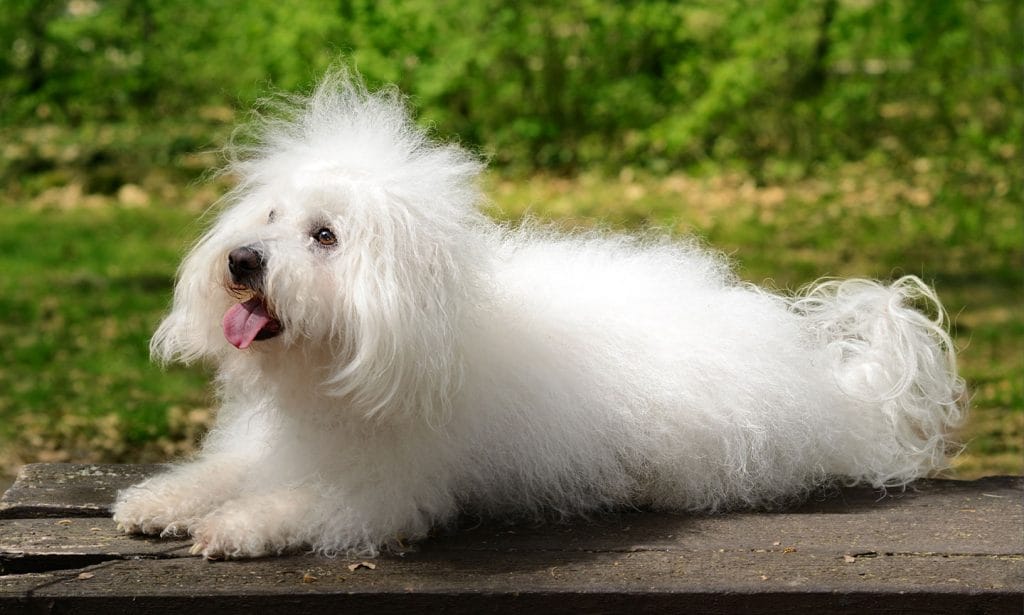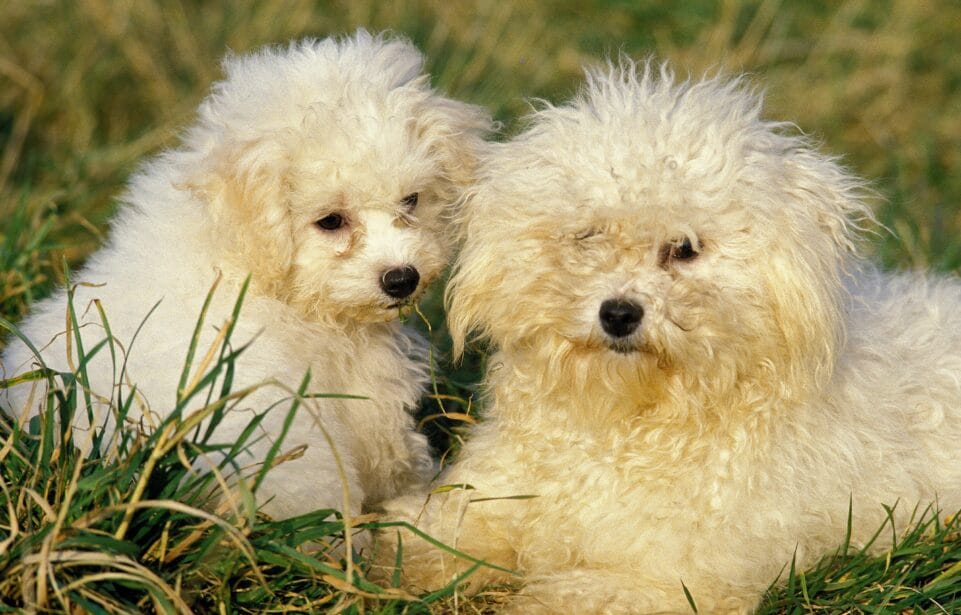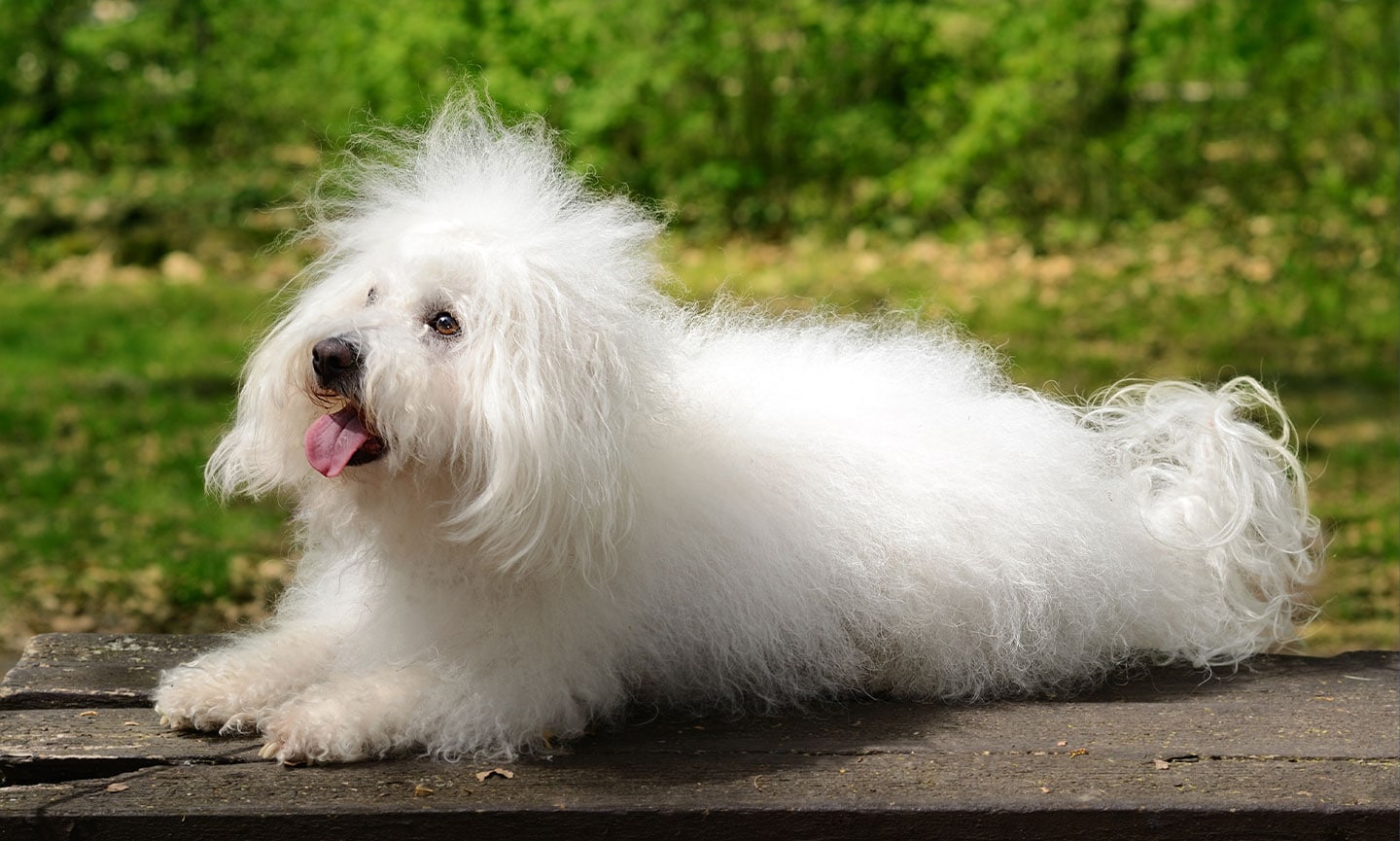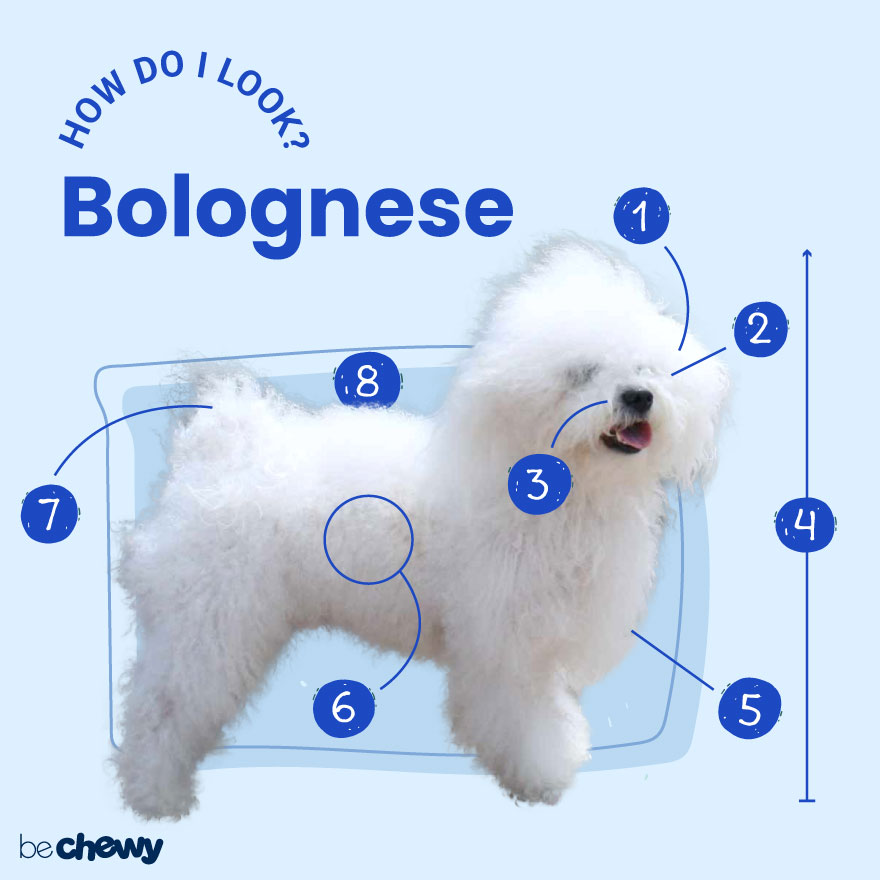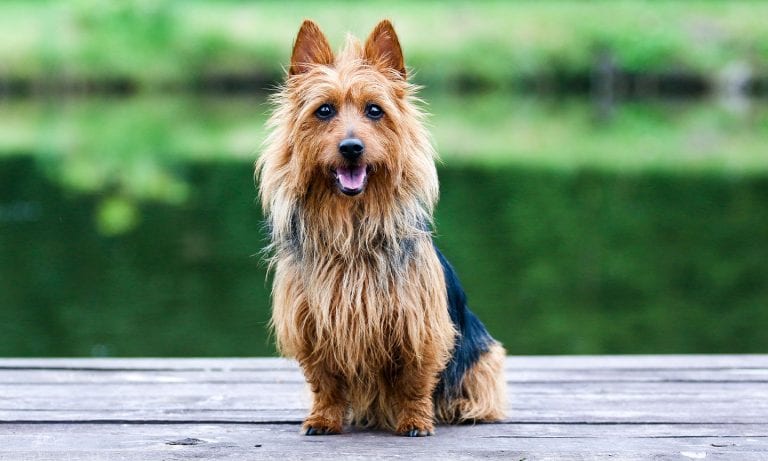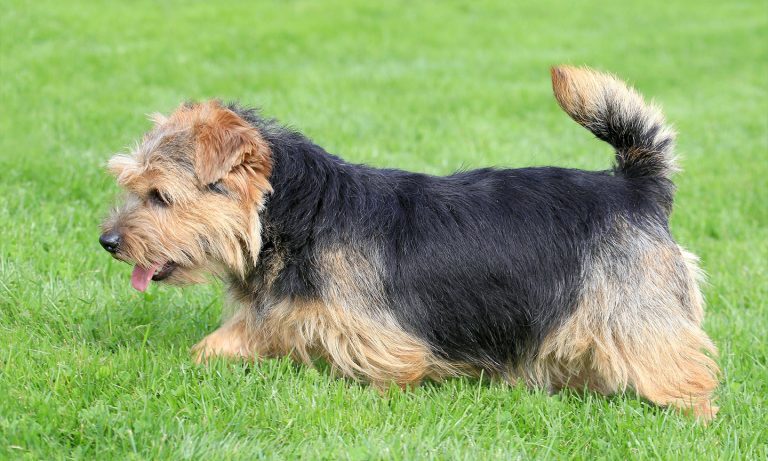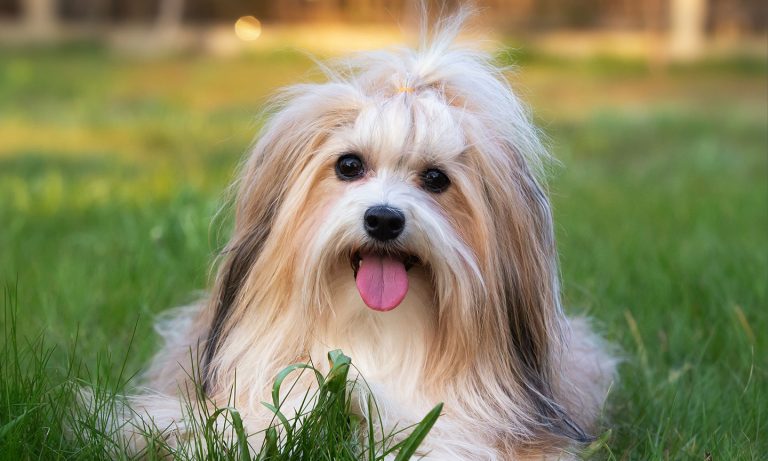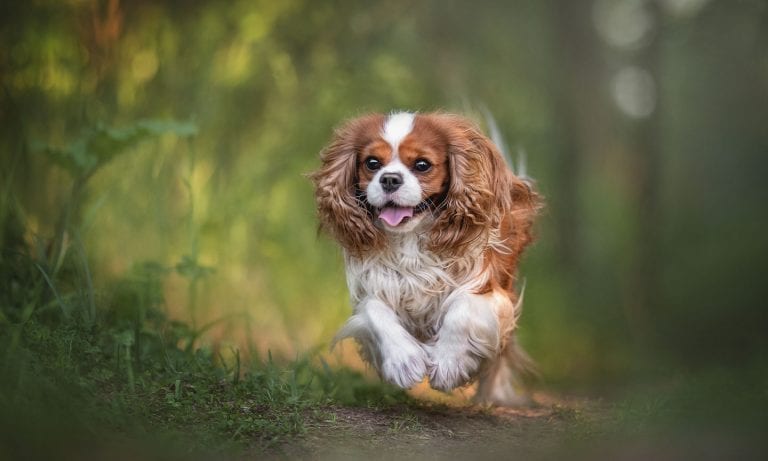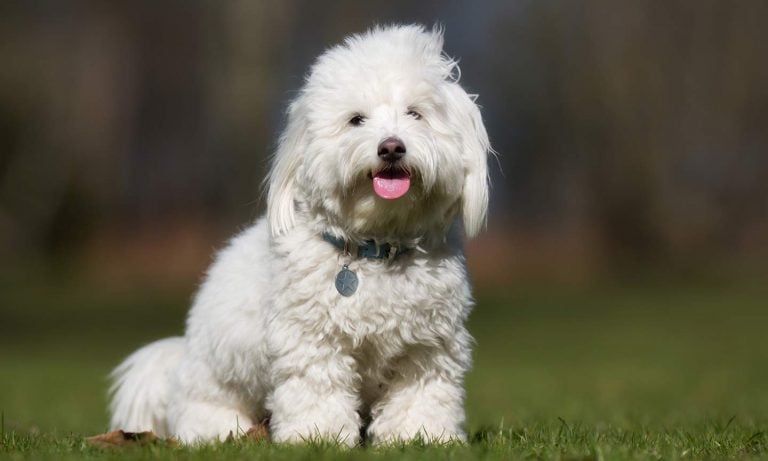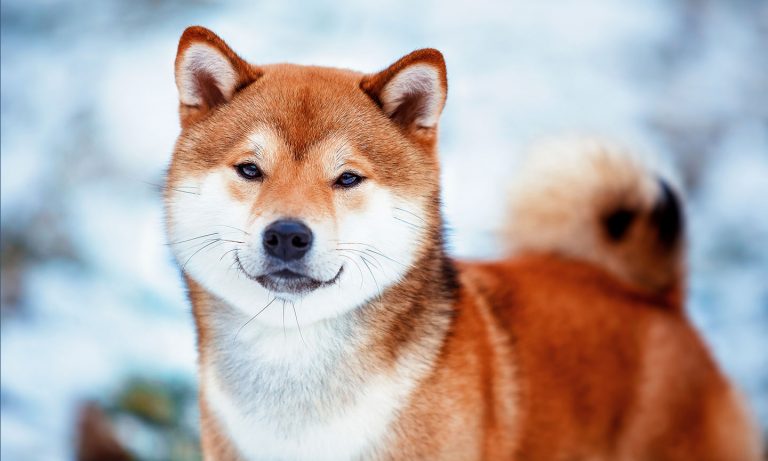Yes, Bolognese is the name of a pasta sauce, but it also belongs to another, equally wonderful Italian export: a sweet-tempered toy dog breed who was once a favorite of Roman nobility. You’ll be instantly smitten with the beauty, playfulness and charm of this silky white ball of fur, as will everyone you pass on your daily walks together. (Be sure to budget extra time to get home!) Despite their royal pedigree, you won’t need to pamper your Bolognese too much, aside from daily brushing—they have an unusually laid-back attitude. These dogs are smart, too, but it’s their sense of humor that really shines. They never take themselves too seriously, and they love nothing more than to make you laugh. Well, that and a good riposo (that’s Italian for “rest”) curled up in your lap.
Breed Snapshot
Temperament:
PlayfulCalmLovingCoat Color:
White
Best For
The Bolognese is a sweet-tempered toy Italian breed who thrives on companionship. They need regular grooming and plenty of attention to keep separation anxiety at bay. For potential pet parents seeking a playful lap dog, these are ideal pets.
Bolognese Temperament
Caring, loving and young at heart, the Bolognese is known for acting as playful as a puppy well into their senior years. They might be pint-sized, but make no mistake, there’s a lot of personality packed into their tiny bodies. This cuddly toy dog breed loves being around people, even strangers—although, true to their royal roots, they may first need proper introductions to feel comfortable.
With a Bolognese puppy, you’re guaranteed a companion dog and cuddle buddy for life—one who will follow you everywhere. Bolos thrive on attention and emotional connection and are happiest when their parent is at home. While these sociable types will get along well with other four-legged pets, they are perfectly happy being the stars of their own one-pup act. Leaving them alone for long periods is a no-no, as this can lead to some less desirable behaviors, like separation anxiety, chewing and barking.
Despite their small size, Bolos can make great watchdogs as they will quickly notice and alert you of anything unusual. But don’t count on them to be your bodyguard. Apart from letting you know when there’s someone at the door, they’re not big barkers and are not prone to biting. They can, however, make great therapy dogs and are perfectly content to match your activity level, keep your lap warm and do pretty much whatever else makes you happy.
These affectionate, intelligent pups do well with city and apartment dwellers, retirees and families with children who have been taught how to handle them gently and safely. Younger children should be supervised around a Bolognese to avoid accidentally injuring your pup with overly rough play.
How to Care for a Bolognese
The Bolognese breed is about as laid-back as dogs come, but when it comes to keeping that gorgeous white coat at its best, they definitely need an extra dose of TLC. This playful breed can be easily distracted and exhibit a stubborn steak, so consistency and patience is a must when training them, especially when they’re puppies. The good news? Because they’re so chill, they don’t need a lot of exercise. They do want all your love and attention, though, which is probably the easiest thing you could ever give to these adorable companions.
Bolognese Health
The Bolognese breed has a life expectancy of 12 to 14 years and is generally healthy, but can be susceptible to a few medical issues. It’s important to be aware of them so you can help your pup live their healthiest life possible and reduce their risk of developing these conditions.
- Patellar Luxation: This inherited condition can cause the kneecap to dislocate and repeatedly pop out of place. It can be treated with physical therapy, weight management, joint supplements, anti-inflammatory medication and, in severe cases, surgery.
- Hip Dysplasia: Hip dysplasia is a genetic hip deformity that can cause lameness and pain. Treatments include weight management, joint supplements, physical therapy and surgery.
- Progressive Retinal Atrophy (PRA): PRA is a genetic eye problem in which the photoreceptor cells in the eye deteriorate, leading to blindness. There is a genetic screening test for the condition, so be sure to ask your breeder, but unfortunately there is no treatment. However, blind dogs can do great if pet parents take steps to monitor and control the condition through lifestyle changes, like not rearranging furniture, so they don’t bump into things.
Bolognese History
The Bolognese dog originated hundreds of years ago in Italy, where their name comes from the city of Bologna. (That is the only connection they have to the famed Italian pasta sauce that hails from the same place. Yes, great things come from Bologna.) Historically, these amiable lapdogs were often given as gifts to kings and queens as far back as the 11th and 12th centuries. They were so loved, in fact, that Roman nobility, as well as some of the most powerful and wealthy families throughout Italy, commissioned portraits featuring these pups. However, as the aristocracy diminished in power and influence, the breed almost went extinct. A few enthusiastic modern-day breeders saved them from obsolescence in the 1980s, restoring not only the breed as a whole, but their popularity, too.
Bolos came to England in 1990 and were recognized by the United Kennel Club here in the United States in 1995. The Bolos were recorded in the Foundation Stock Service (a breed registry of the American Kennel Club) in 1999. Because the breed is so rare and relatively new to the United States, it is not yet fully recognized by the AKC, but they have been permitted to compete in AKC companion events since 2008. They are also referred to as Bichon Bolognese, since they belong to the Bichon family of dogs.
Are you looking to add a Bolognese to your life? You can find a list of reputable breeders on the American Kennel Club’s website. While the average Bolognese puppy price may vary, you can expect the cost to run anywhere from $1,200 to $2,000 for a pup who’s been screened for health and temperament issues and may even come with pedigree papers. You can also adopt from a local Bolognese rescue organization or check the listings at your local animal shelter. Search Chewy’s database of adoptable dogs for Bolognese in your area.
FAQs
Are Bolognese dogs hypoallergenic?
Yes, Bolognese dogs are considered hypoallergenic. Their low shedding reduces the spread of their dander, which leads to less irritation in people with dog allergies.
Do Bolognese dogs bark a lot?
No, Bolognese dogs don’t bark a lot if they are trained not to. However, they are known to bark when left alone for too long or to alert their owner when they see something amiss or hear someone at the door.
How long do Bolognese dogs live?
The lifespan of Bolognese ranges between 12 to 14 years.
What are the most popular Bolognese dog names?
Some of the most popular Bolognese names are Posie, Clover, Francis, Reese, Bianca, Archie, Bambalina and Finn. Get more dog names here.
What are the most common Bolognese dog mixes?
The most common Bolognese mixes are:
- Bolognese-Poodle mix (Bolonoodle, Bolopoo, Bolognesepoo, Bolognesedoodle)
- Bolognese-Maltese mix (Molognese, Bologmalt)
- Bolognese-Shih Tzu mix (Bolo-Tzu)
- Bolognese-Havanese mix (Dualanese)
- Bolognese-Yorkie mix (Bolognese Yorkie)
Note: These are not purebred dogs but mixed breeds.
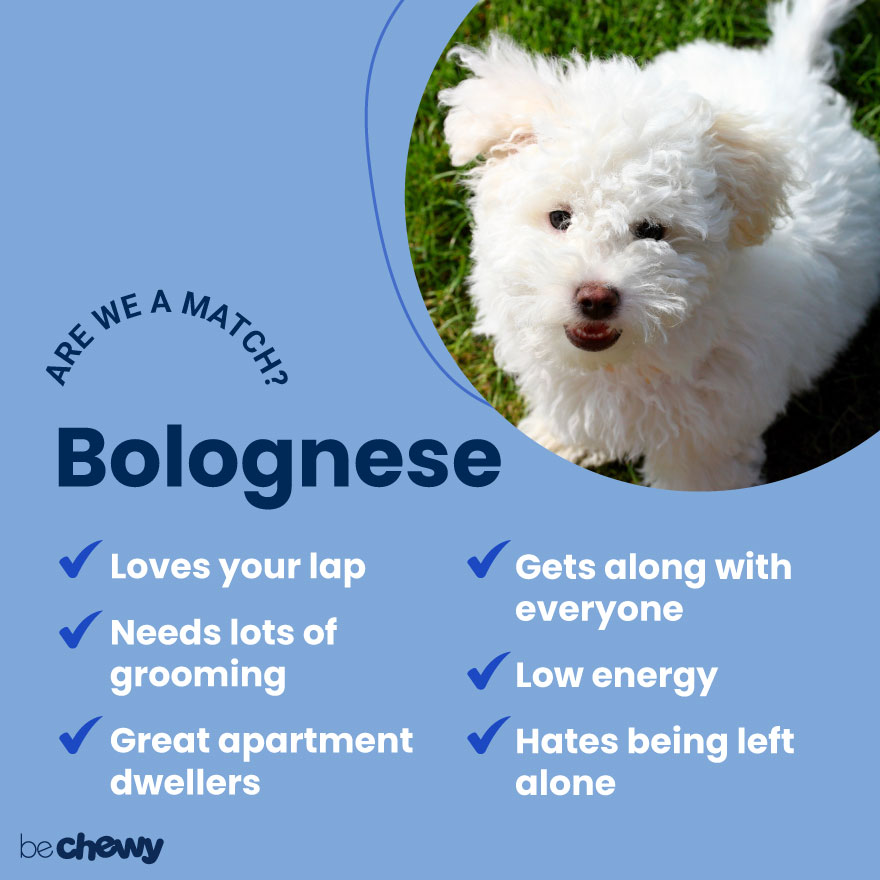
Top Takeaways
Bolos are loving, loyal companion dogs for retirees, families with older children and newer pet parents who work from home. These charming furballs pack a lot of personality into their tiny bodies and are both intelligent and inquisitive. While maintaining their pristine white coats requires a little more grooming than some breeds, they don’t need a lot of exercise and are generally very healthy. Wherever you are is exactly where your Bolo wants to be, so don’t leave them at home alone for too long if you want your pup to keep smiling.
Expert input provided by veterinarian Corey Shagensky, DVM, founder of Progressive Animal Wellness in Avon, Conn., and Los Angeles-based certified dog behaviorist and trainer Russell Hartstein, CDBC, CPDT-KA, founder of Fun Paw Care.
Breed characteristic ratings provided by veterinarian Dr. Sarah J. Wooten, DVM, CVJ, a veterinarian at Sheep Draw Veterinary Hospital in Greeley, Colorado; dog trainer and behavior consultant Irith Bloom, CPDT-KSA, CBCC-KA, CDBC, owner of The Sophisticated Dog, LLC, in Los Angeles; and certified animal behavior consultant Amy Shojai, CABC, in Sherman, Texas.
The health content was medically reviewed by Chewy vets.
Photo credit for “How do I look?” 101dogbreeds.com
Female Names
- Lily
- Daisy
- Bella
- Bella Rosa
- Kobe Morris
- Lucy
- Felix
- Elsie
- Luna
- Biscuit
Male Names
- Milo
- Geppetto
- Sammie Brown
- Fonzie
- Titi
- Louie
- Iggy
- Donnie
- Motley
- Rascal
Share:
